|
 |
|

|
|
| |
|
ASEAN Regional Lighting Market Assessment
 In October 2015, IIEC was contracted by the United Nations Environment Programme (UNEP) to carry out a lighting market assessment to evaluate the opportunity for harmonizing lighting standards and other policies in the ASEAN region. The assessment was conducted as part of the ASEAN SHINE initiative, which promotes higher efficiency lighting equipment in the ASEAN community through a partnership between the UNEP-GEF’s en.lighten initiative and ASEAN Centre for Energy (ACE), with financial support from the European Union’s SWITCH-Asia programme and the Australian Government.
In October 2015, IIEC was contracted by the United Nations Environment Programme (UNEP) to carry out a lighting market assessment to evaluate the opportunity for harmonizing lighting standards and other policies in the ASEAN region. The assessment was conducted as part of the ASEAN SHINE initiative, which promotes higher efficiency lighting equipment in the ASEAN community through a partnership between the UNEP-GEF’s en.lighten initiative and ASEAN Centre for Energy (ACE), with financial support from the European Union’s SWITCH-Asia programme and the Australian Government. |
|
The IIEC team assessed current and projected lighting markets in all ASEAN member states, and it is estimated that the total number of lamps installed in various end-use sectors in all ASEAN member states was around 1.9 billion lamps in 2014. The residential sector was the largest end-use sector in the region, accounting for about 69% of total lamp stock. CFLs occupy the largest share in the residential lamp stock, accounting for about 48%, followed by LFLs at 34%. Indonesia had the largest share in terms of number of lamps installed in the region, about 547 million lamps. IIEC also
estimated the greenhouse gas (GHG) emission reduction potential for ASEAN that could be achieved through the implementation of efficient lighting policy measures. This assessment is expected to support ASEAN member states in the establishment of harmonized minimum energy performance standards (MEPS) and test standards for lighting products, as well as implement coordinated monitoring, verification and enforcement (MVE) schemes to ensure compliance with the standards. As part of the assessment, a market forecasting tool called “Policy Analysis Model for ASEAN (PAMA)” was developed to project lamp stocks and shipments in each ASEAN member state up to 2030. PAMA also provides a consumer-oriented analysis and a national cost-benefit analysis of lighting policies. The model uses country-specific data and indices (such as population, GDP, per capita income, electrification and distribution rates), in combination with product-specific data (lamp shipment by types, efficacies and lifetimes), to estimate impacts from various energy efficiency policy scenarios.
|
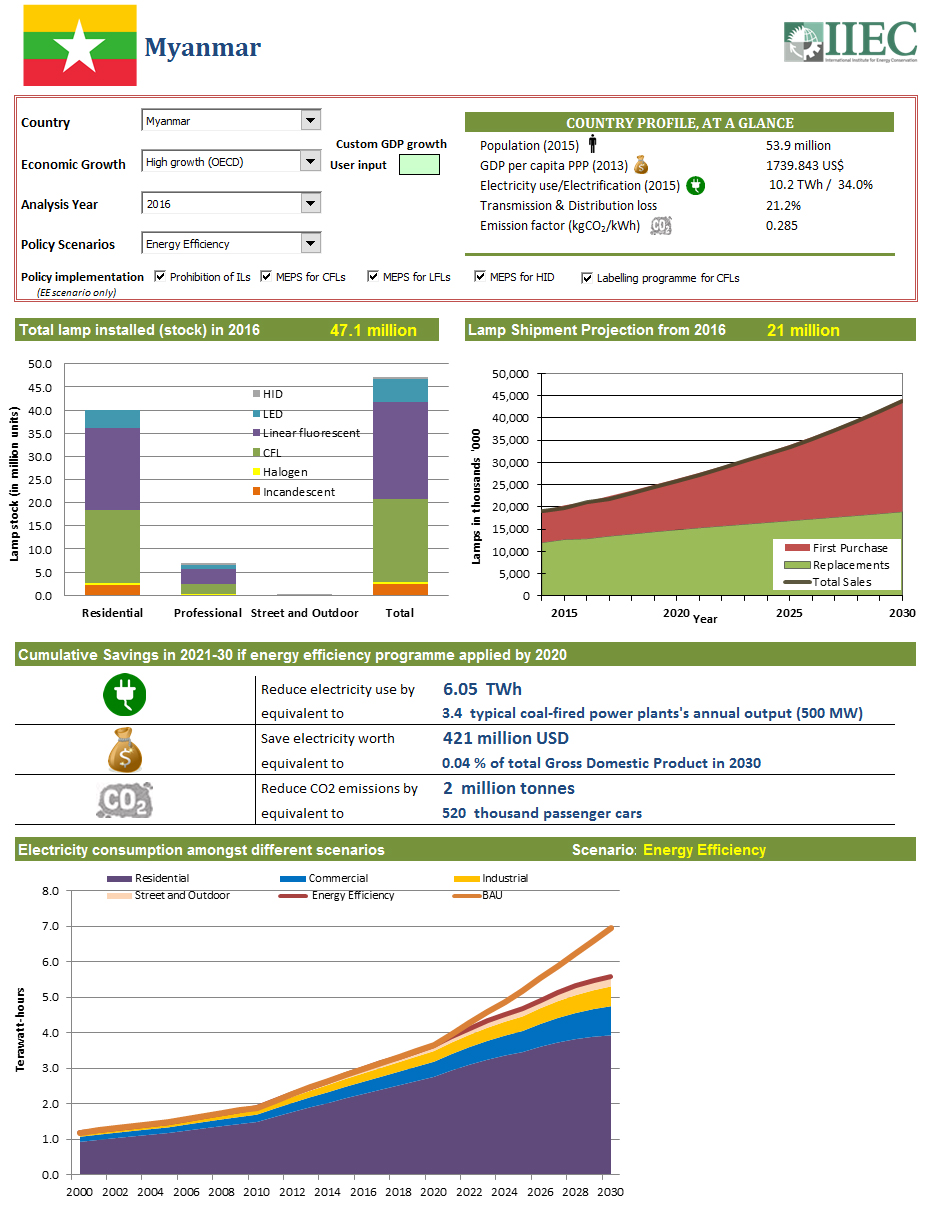
 The Policy Analysis Model for ASEAN (PAMA) The Policy Analysis Model for ASEAN (PAMA) |
|
| The results of the regional lighting market assessment and PAMA tool were presented at the Lighting Policy and Technical Working Group Meeting, held on 26 July, 2016 in Jakarta, Indonesia. At the meeting, the Working Group finalized the list of lighting products to be considered for regional harmonization under the ASEAN SHINE initiative. |
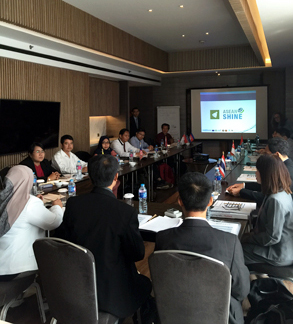
 Representatives from the ASEAN Government Agencies, ACE and UNEP at Representatives from the ASEAN Government Agencies, ACE and UNEP at
the Technical Working Group Meeting in Jakarta, in July 2016 |
|
|
|
|
|
LED Street Lighting Retrofit Project in Surabaya, Indonesia
|
 With support from the World Bank’s Energy Sector Management Assistance Program (ESMAP) as part of the Sustainable Energy and Emissions Planning (SUEEP) Program, IIEC conducted a feasibility study for a pilot demonstration using LED retrofits in Surabaya to demonstrate the energy savings, emissions reduction and financial benefits that could be realized by the City Government of Surabaya (CGS). The study looked at the viability of energy efficiency (EE) lighting technologies, evaluated implementation approaches, and developed an EE implementation plan with proposed financial arrangements for street and outdoor lighting, consistent with Indonesia’s PPP framework. With support from the World Bank’s Energy Sector Management Assistance Program (ESMAP) as part of the Sustainable Energy and Emissions Planning (SUEEP) Program, IIEC conducted a feasibility study for a pilot demonstration using LED retrofits in Surabaya to demonstrate the energy savings, emissions reduction and financial benefits that could be realized by the City Government of Surabaya (CGS). The study looked at the viability of energy efficiency (EE) lighting technologies, evaluated implementation approaches, and developed an EE implementation plan with proposed financial arrangements for street and outdoor lighting, consistent with Indonesia’s PPP framework. |
|
| Surabaya is the second largest city in Indonesia and it has good coverage of street and outdoor lighting services. The City of Surabaya had about 75,000 luminaires in 2014, and the majority of which are high pressure sodium (HPS). The operating costs of street and outdoor lighting including new installation and maintenance in Surabaya nearly doubled over the past five years. |
| IIEC supported Surabaya to evaluate the pilot tests of LED technologies, seen as short and long term options for energy efficient street lighting in the city. To date, more than 1,500 LED luminaires have been installed along main traffic routes and major parks in the city. The successful implementation of the pilot phase will allow for the CGS to leapfrog to the large-scale implementation phase. The citywide investment to transform all street and outdoor lighting in Surabaya to LEDs will result in annual electricity and maintenance cost savings of about US$5-$7 million after 2020. |
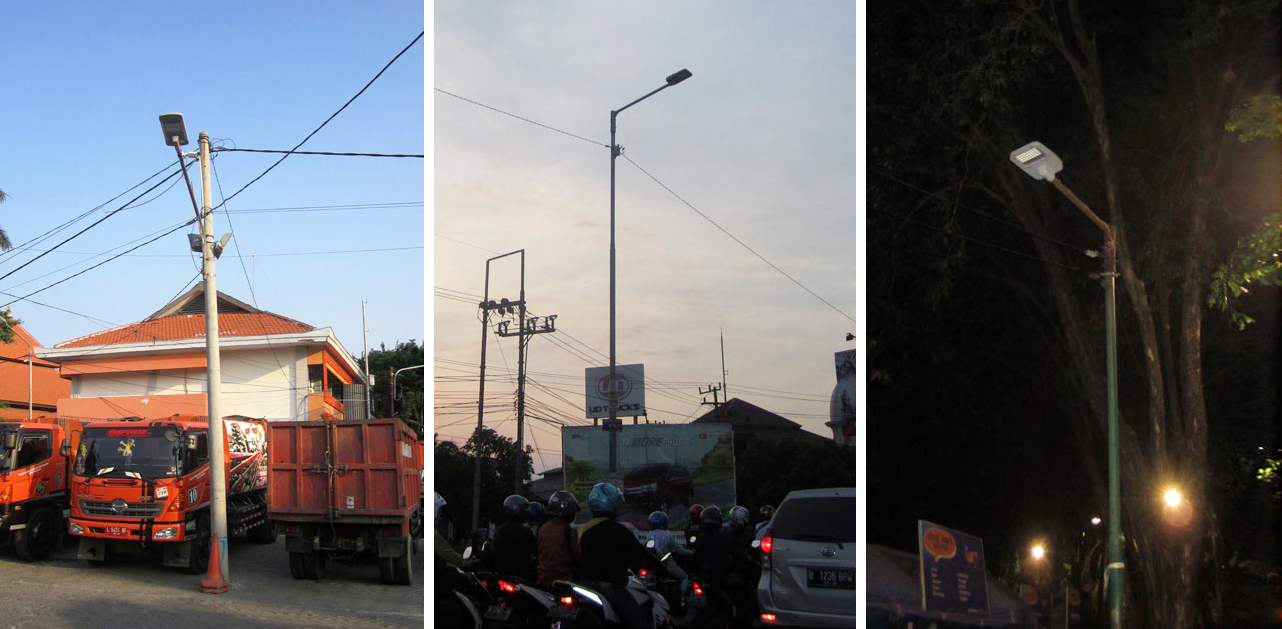
 70W and 150W LED Luminaires Installed to Replace 150W and 250W HPS Luminaires along the Main Roads and 70W and 150W LED Luminaires Installed to Replace 150W and 250W HPS Luminaires along the Main Roads and
in Some Parks in Surabaya |
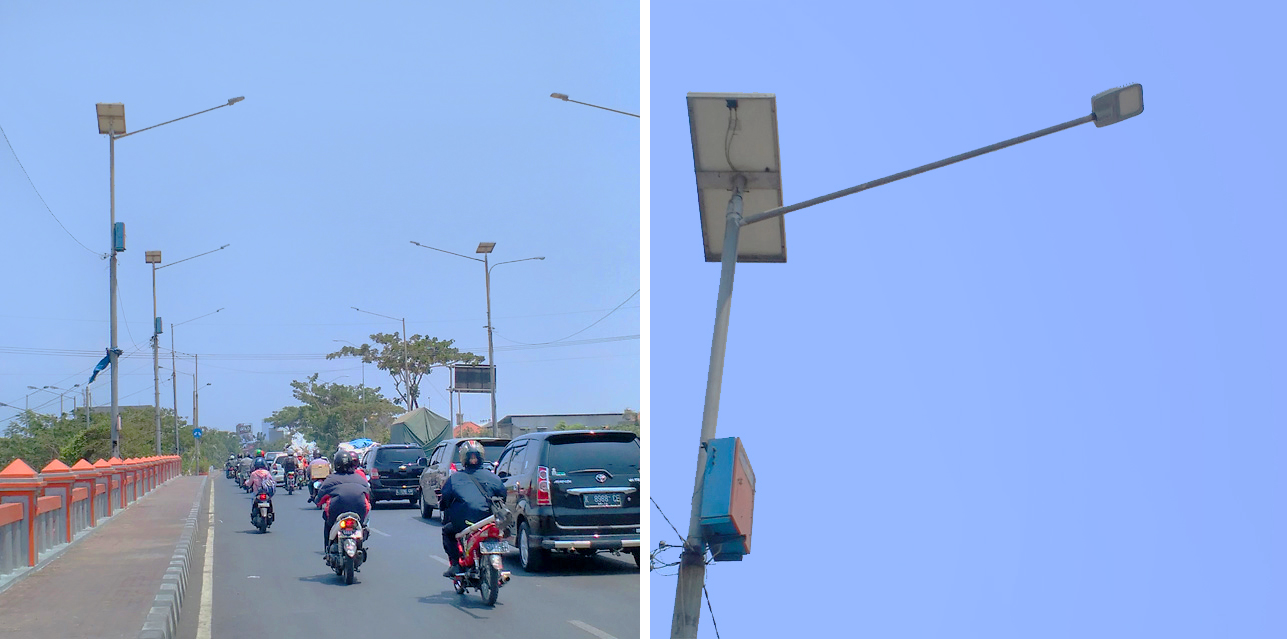
 Trial Installation of Solar LED Street Lighting in Surabaya Trial Installation of Solar LED Street Lighting in Surabaya |
|
|
|
|
|
Developing an Industrial Energy Efficiency Fund for India
|
 In partnership with The Carbon Trust, UK and the Bureau of Energy Efficiency (BEE), IIEC-India helped design a national level EE fund for India’s industrial sector. The new National Industrial Energy Efficiency Fund (NIEEF) is a sub-fund under the National Clean Energy Fund (NCEF). The NIEEF defines how NCEF resources can be deployed to support a range of energy efficiency technologies on their journey from development to deployment. The IIEC-India team has been working with a variety of stakeholders—including government agencies, industry, financiers, technology providers, and energy service companies—to ensure that the new fund will be effective at transforming the Indian energy efficiency market. In partnership with The Carbon Trust, UK and the Bureau of Energy Efficiency (BEE), IIEC-India helped design a national level EE fund for India’s industrial sector. The new National Industrial Energy Efficiency Fund (NIEEF) is a sub-fund under the National Clean Energy Fund (NCEF). The NIEEF defines how NCEF resources can be deployed to support a range of energy efficiency technologies on their journey from development to deployment. The IIEC-India team has been working with a variety of stakeholders—including government agencies, industry, financiers, technology providers, and energy service companies—to ensure that the new fund will be effective at transforming the Indian energy efficiency market.
The NIEEF is initially focused on industry (both large companies and SMEs) but can be extended to other sectors in the future. The fund also may be combined with other financing sources, such as international climate finance instruments. The draft, high-level design of the NIEEF was completed during the first phase of the project, which ended in April 2016. During Phase 2, the design will be presented to the NCEF Inter Ministerial Group, and the project team will develop more detailed design features for the new fund. In August, the IIEC and the Carbon Trust organized half-day roundtables in Delhi and Mumbai with representatives of industry and financial institutions, respectively, to help finalize the NIEEF design strategy. |
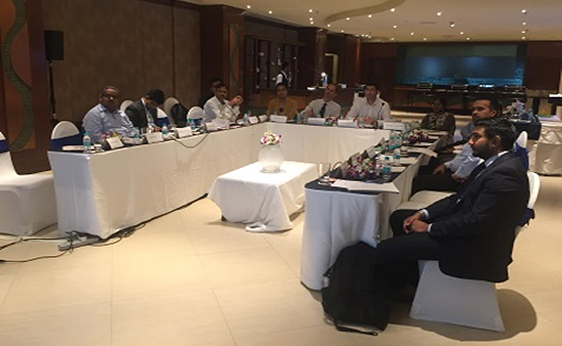
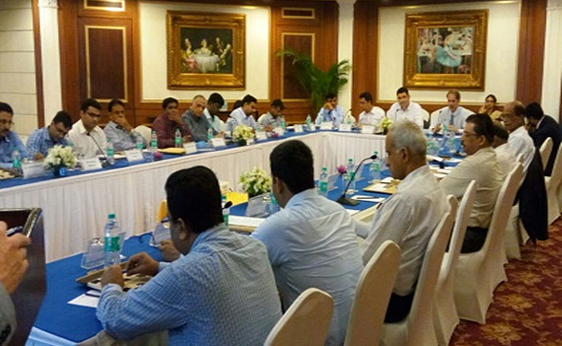
 IIEC and Carbon Trust Team conducting the Roundtables IIEC and Carbon Trust Team conducting the Roundtables
in Mumbai and Delhi, in August 2016 |
|
| For further information, please contact Prima Madan - pmadan@iiec.org |
Back to Top  |
|
|
|
|
|
|
|
|
|
IIEC’s New Faces
 To meet the increasing demand for energy professionals to support IIEC’s activities, the following experts recently joined the IIEC team:
To meet the increasing demand for energy professionals to support IIEC’s activities, the following experts recently joined the IIEC team: |
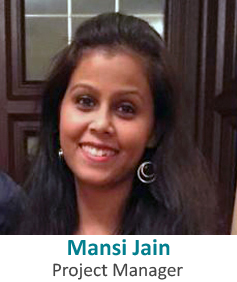
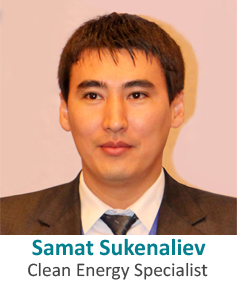
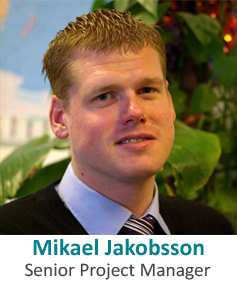
|
| Mansi joined IIEC’s South Asia Office in New Delhi in March 2016 as a Project Manager. Mansi holds a Master’s in Construction Economics and Management from University College London, UK. She is currently pursuing doctoral research (PhD.) in Innovation and Governance for Sustainable Development from the University of Twente, Netherlands. Mansi has several years of experience in developing and implementing energy efficiency and sustainable energy projects, predominantly in the building sector. She has worked with international agencies including USAID, UNDP-GEF (Cape Verde), KfW, and the Collaborative Labeling and Appliance Standards Program (CLASP), and has supported national agencies in India -- including the Bureau of Energy Efficiency (BEE) and National Housing Bank (NHB) -- in implementing energy efficiency and energy financing projects. |
| Samat joined the IIEC’s Asia-Pacific Team in Bangkok as a Clean Energy Specialist in March 2016 and currently managing a series of EE projects in the Pacific and Myanmar. Samat is an Electrical Engineer with a Master’s Degree in Engineering (Electrical Power System Management) from the Asian Institute of Technology, Thailand. He is a Kyrgyzstan national and has many years of energy consulting experience with AIT Consulting (Thailand) and GFA Consulting (Kyrgyzstan). He also has undertaken several ADB and WB assignments in Central Asia and Greater Mekong Countries. |
| Mikael is our latest addition, joining the IIEC team in Bangkok as a Senior Project Manager. Mikael is a Swedish national with an M.Sc. in Engineering (Energy/HVAC) and over 17 years’ professional experience in renewable energy integrated energy systems and energy planning in Northern Europe, Eastern Europe, the Middle East and Asia. Over the past eight years, Mikael has focused on developing integrated municipal energy systems, thermal power and energy planning projects in Asia, particularly China. He will be exploring opportunities for diversifying IIEC’s range of services and expanding IIEC operations in Asia and the Pacific region. |
|
Back to Top  |
|
|
|
|
| |
|
About IIEC
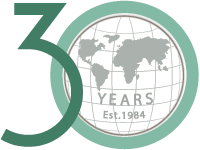 The IIEC was founded in 1984 to dramatically increase the use of energy efficiency as an important clean energy approach in developing countries. We believe local presence is the best way to bring about results, and through our regional offices all over the world, we have been effective in bringing about progress in energy efficiency policy and implementation that has both reduced energy consumption by thousands of MWs and fostered economic development in the countries we serve. The IIEC works with stakeholders across all sectors to connect international best practice with the unique needs of the communities in which we operate, combining sound energy efficiency, Demand-side management (DSM) and renewable energy policy with hands-on implementation in order to reduce greenhouse gas emissions and encourage sustainable development. The IIEC was founded in 1984 to dramatically increase the use of energy efficiency as an important clean energy approach in developing countries. We believe local presence is the best way to bring about results, and through our regional offices all over the world, we have been effective in bringing about progress in energy efficiency policy and implementation that has both reduced energy consumption by thousands of MWs and fostered economic development in the countries we serve. The IIEC works with stakeholders across all sectors to connect international best practice with the unique needs of the communities in which we operate, combining sound energy efficiency, Demand-side management (DSM) and renewable energy policy with hands-on implementation in order to reduce greenhouse gas emissions and encourage sustainable development. |
|
 If you do not wish to receive IIEC E-Notes, please reply to e-notes@iiec.org with the word "UNSUBSCRIBE" in the subject line. If you do not wish to receive IIEC E-Notes, please reply to e-notes@iiec.org with the word "UNSUBSCRIBE" in the subject line. |
| |
 |
Leading the Transition to Clean Energy |
|
|
 |
| US Office : |
 |
Asia Regional Office : |
South Asia Office : |
Country Office : |
Washington DC, USA
Tel: +1 443 934 2279
e-mail: iiecdc@iiec.org |
Bangkok, Thailand
Tel: +66 2 662 3460-4
Fax: +66 2 261 8615
e-mail: iiecbangkok@iiec.org |
New Delhi, India
Tel: +91 11 4182 8216/17
Fax: +91 11 4182 8217
e-mail: iiecindia@iiec.org |
Manila, Philippines
Tel: +632 426 8567
Fax: +632 426 8566
e-mail: iiecmanila@iiec.org |
|
 |
| Copyright © 2016 International Institute for Energy Conservation, All Rights Reserved. |
|
|

